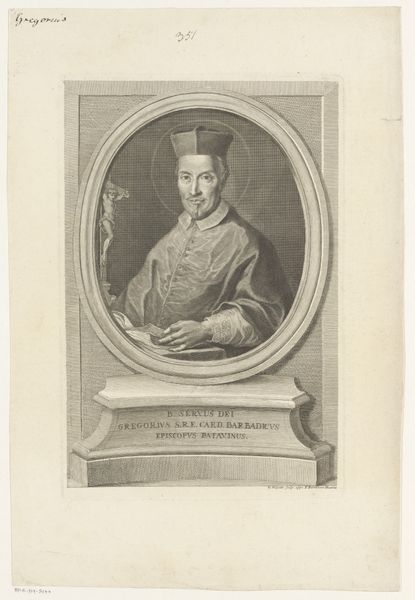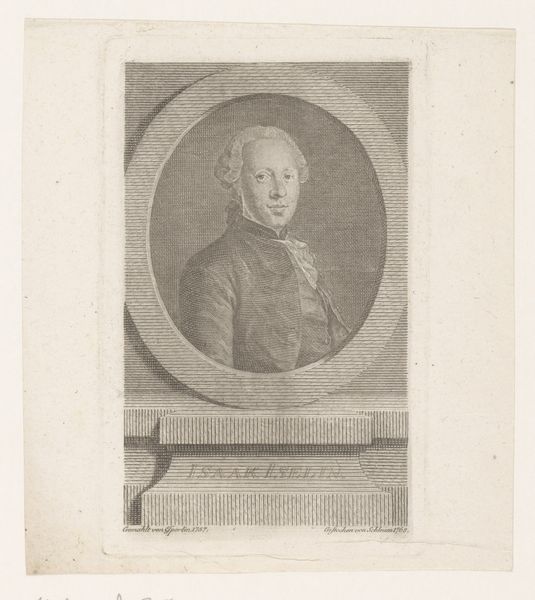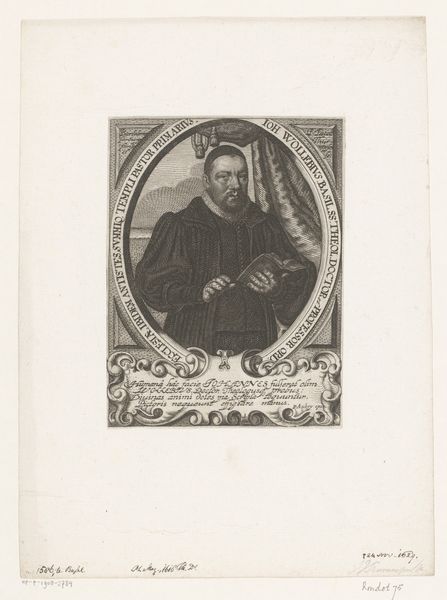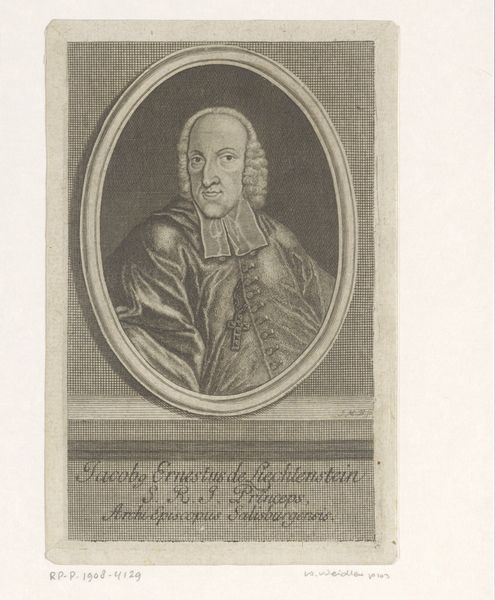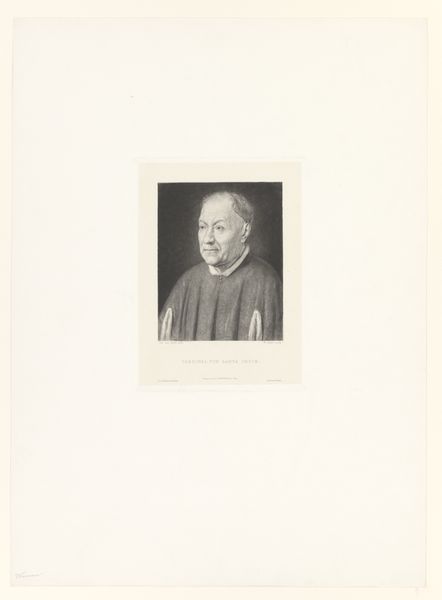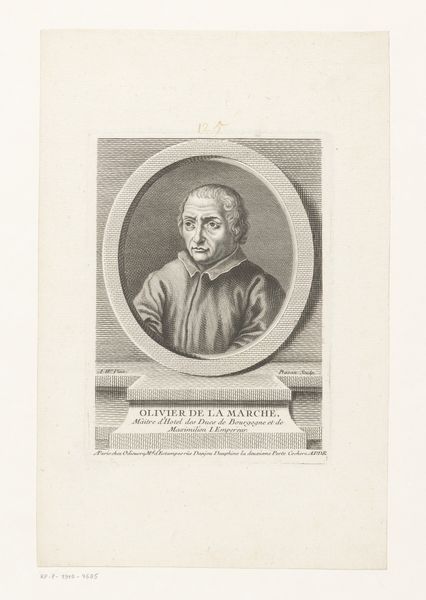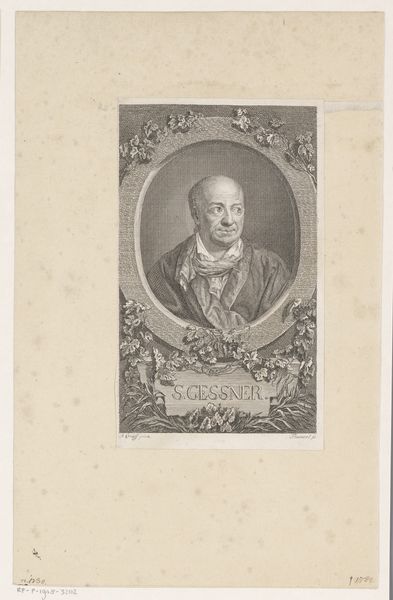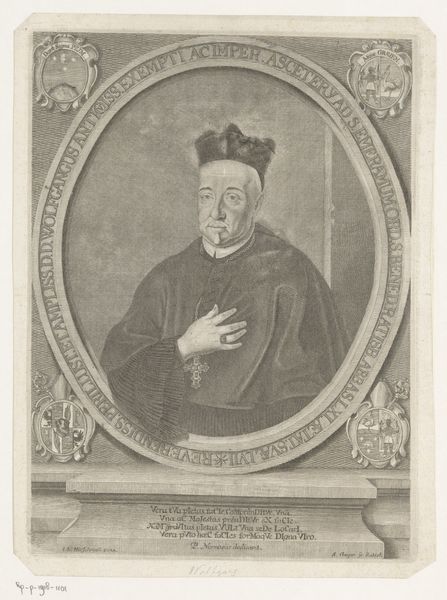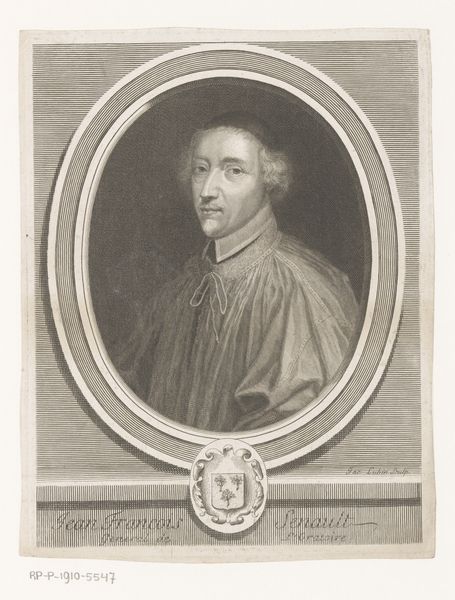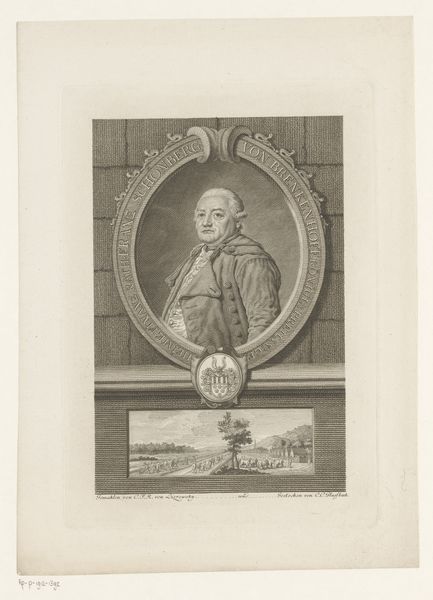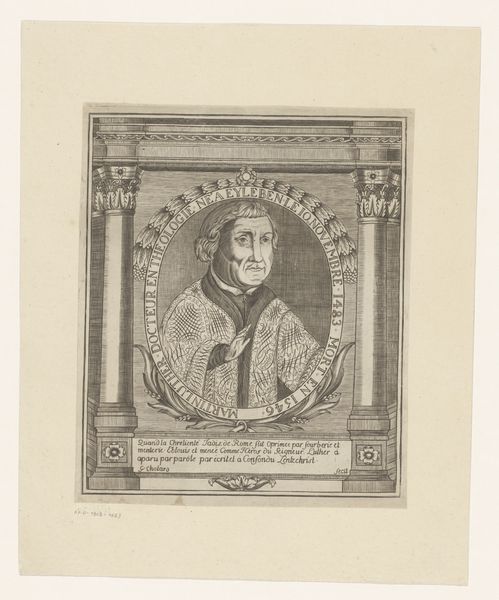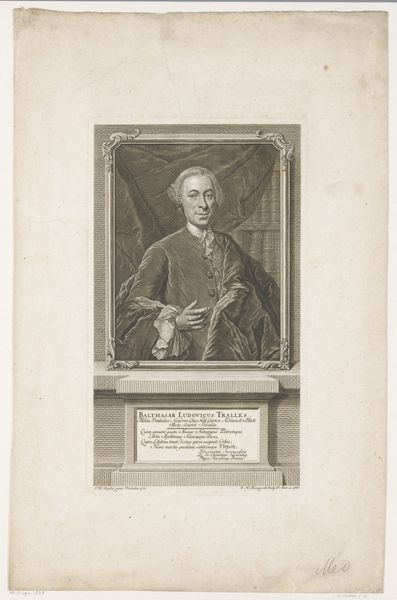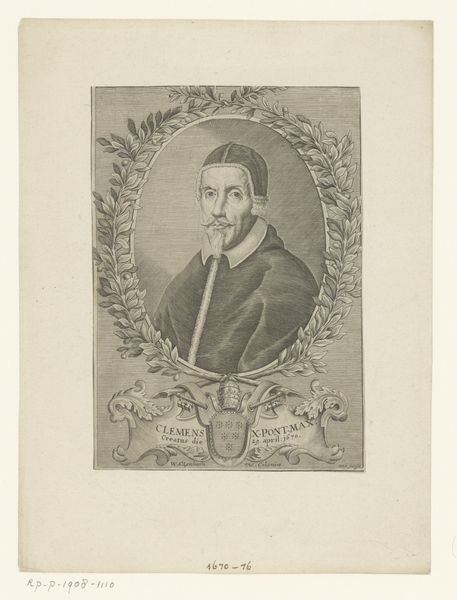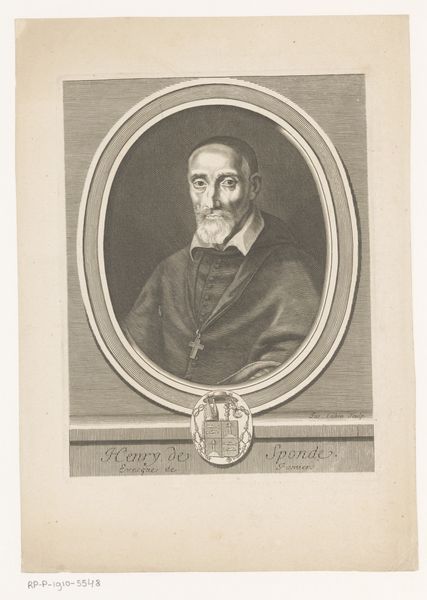
Portret van Pasquier Quesnel op 82-jarige leeftijd 1716
0:00
0:00
print, engraving
#
portrait
#
baroque
# print
#
history-painting
#
academic-art
#
engraving
Dimensions: height 359 mm, width 252 mm
Copyright: Rijks Museum: Open Domain
Curator: At first glance, there's a certain... sternness about this piece. The subject seems very serious, almost unapproachable. Editor: That's Marie-Anne-Hyacinthe Hortemels's engraving, "Portret van Pasquier Quesnel op 82-jarige leeftijd," created in 1716. Quesnel, as the inscription tells us, was a priest. Notice the material reality of the engraving itself. It is a print made from a metal plate. How do you think its relatively cheap reproduction cost, compares to other portrait formats in 1716? Curator: I see the subtle textures achieved through engraving; the lines create volume and depth within this limited tonal range. It appears the subject is framed within an oval border, resting upon a classical pedestal form. Editor: Absolutely. This print circulated within specific social and intellectual circles. Quesnel was a Jansenist theologian, so this image probably had religious or political undertones. What can this print tell us about Quesnel’s beliefs, influence, and network? How did these prints reinforce religious doctrines at a time of political tensions? Curator: The Baroque influences are evident, however subtly, in the drapery behind Quesnel and the almost theatrical presentation of his figure. But, returning to form, I'm drawn to the careful modulation of light across his face. Hortemels uses such controlled lines to convey age and wisdom. What do you think of the compositional decisions at play here? Editor: Think of the labor, the training, the economic relationships involved in making prints accessible. There's so much hidden within the image itself when we begin considering the production and its historical reception. By investigating the networks through which the print was circulated, its cultural purpose becomes apparent. Curator: Looking closer, I notice how his gaze, though seemingly direct, lacks a certain warmth. There's an almost academic quality to it. My initial impression of sternness might stem from this dispassionate portrayal. Regardless of how dispassionate the engraving appears, I am intrigued about Pasquier Quesnel and the Jansenist theological and political environment he operated within. Editor: Indeed, the engraving presents just one piece within a broader historical and societal puzzle. Analyzing prints can be a really intriguing way to reveal those hidden dynamics and relationships that once circulated them!
Comments
No comments
Be the first to comment and join the conversation on the ultimate creative platform.
